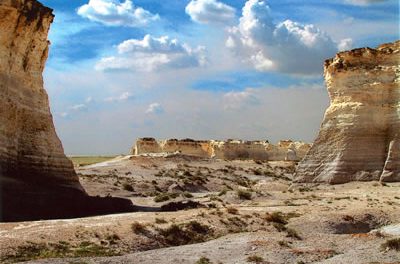 Christians have called Christ's coming the fulcrum of world history. But Hinduism and Buddhism, the two ancient religions that grew up in India hundreds of years before Christ's birth, were supposedly unaltered by the momentous events in western Asia—so how could Christ have changed everything, as we often claim? One theory: Hinduism and Buddhism did change radically 1,900 years ago. By Marvin Olasky, counselor to President George Bush and Chief Editor of the World Magazine.
Christians have called Christ's coming the fulcrum of world history. But Hinduism and Buddhism, the two ancient religions that grew up in India hundreds of years before Christ's birth, were supposedly unaltered by the momentous events in western Asia—so how could Christ have changed everything, as we often claim? One theory: Hinduism and Buddhism did change radically 1,900 years ago. By Marvin Olasky, counselor to President George Bush and Chief Editor of the World Magazine.
Were Christ's birth, death, and resurrection the decisive events in human history? As "God was reconciling the world to Himself in Christ" and "making peace through His blood, shed on the cross" (2 Corinthians 5:19, Colossians 1:20), did not just transformed individuals but world culture change in a noticeable way? Sometimes we take that on faith, saying that slow changes began at that time but major changes won't occur until near the end of the end times.
Many historians, though, have noted the positive contributions of Christianity over the centuries in fields as diverse as charity, education, medicine, government, justice, and science. And the research I've been doing suggests that, just as the veil at the Temple was ripped in two, so Christ's crucifixion and the resurrection changed every existing religion. Biblical Judaism, of course, morphed into Talmudic Judaism (WORLD, March 2, 2002).
Buddhists developed a new form of their faith that soon became dominant. Hinduism also went through a great change—at least according to the theories of a father-daughter team of Ph.D.s in southeastern India. Dr. M. Deivanayagam and Dr. D. Devakala Jothimani say the two major denominations of Hinduism today—Vishnu-followers and Shiva-followers—arose not from early Hinduism but from early Christian churches probably planted by the apostle Thomas in India from a.d. 52 to 68. They say that ancient India had five religions: three sacrificial (Indus Valley, Ancient Dravidian, Aryan) plus two nonsacrificial (Buddhism and Jainism), and that new doctrines emerging after Thomas's evangelism—salvation by faith, no more need for animal sacrifice—were part of a Trinitarian faith that proclaimed God's willingness to come to earth as an avatar (incarnation).
They state that the original argument between Vishnu and Shiva devotees concerned whether the Holy Spirit was male (as Vishnu followers stated) or female (the position of Shiva followers). They claim that ancient Indian sculptures—better to call them idols, as Hindus regularly do—repeatedly try to communicate a confused idea of trinity through Somaskanda, the depiction of God the Father with an uma (wife) and skanda (son). They emphasize the frequency of three in Indian religion. Followers of Vishnu draw on their foreheads three vertical lines in honor of their three most important gods: Creator Brahma, Preserver Vishnu, Destroyer (of Evil) Shiva.
Followers of Shiva often use ash to smear on their foreheads three horizontal lines depicting their trinity: Father Shiva, Son Ganesha, Holy Spirit Shakti. Shiva carries a trident. The sacred thread worn by Hindu young men has three strands. They say the frequent depictions of Shiva dancing in the cemetery suggest victory over death through resurrection. They say early Indian Christians tried to show that God was neither male nor female through depiction of Arthanareeswarar —artha (half), naree (female), Iswarar (God, Lord). They point out that Vishnu (his name derives from Ven, the term for heaven in south India's Tamil language) is often depicted as lying on a snake—controlling evil within biblical symbolism. They say the snake around Shiva's hips also shows him controlling evil, since the serpent has now become an ornament of God and a testimony to his power. They exegete Hindu mythology according to their sometimes peculiar interpretations.
For example, Shiva's wife Shakti makes a son, Ganesha, out of dust, but Shiva cuts off his head; Shakti, though, puts an elephant's head on Ganesha and he comes back to life, with the head of an elephant (India's most glorious animal). They say that is the Hindu representation of the Son of God dying and then being glorified. They explain the attributes of Hindu gods as reflections of biblical teaching. They say Shiva traditionally has a red body because Moses first saw God in the fire of the burning bush; Indians thus showed God as one who is fiery red. They say the wall of one temple refers to the flood when it shows Krishna—the god Vishnu incarnate—lifting up a big hill to make it an umbrella for his devotees and their cattle. My wife and I visited numerous temples alongside the father-daughter research team.
With the tap-tap-tapping of idolmakers' chisels and hammers at seventh- and eighth-century Mahabilipuram temple sites resonating in our ears, we felt like saying, for several reasons, that the Deivanayagam theory was too fanciful to be true. None of the temple sculptures we examined show fish symbols, crosses, or other iconograp
hic representations of early Christianity.
Besides, what would Christians who understood the biblical prohibition on graven images be doing making idols, anyway? And yet, late one evening we walked with the two researchers through the Valkuntha Perumal temple in the little village of Kancheepuram. Hindu temples today are essentially square, but to enter this ancient temple we walked through a gate into an outer courtyard, then up three steps into an inner courtyard, then three more steps into one further in. We stood before what the priest said was the Holy of Holies, and at that point it hit me: Hindu temples for the past thousand years have been squares, but was this temple, longer than it is wide, loosely modeled on the Temple in Jerusalem?
Non-Hindus normally are not allowed into the inner sanctum, but we were with Mr. Deivanayagam, who looks like a guru, and he expressed a willingness to participate in the temple's central rite. So the priest, naked from the waste up, gave him coconut water and some solid pieces of a medicinal leaf, chanting as he did. It hit me: Was that a Hindu imitation of communion? Then, holding a flashlight, examining the wall sculptures, I shone the light on a figure of a man undergoing punishment by being impaled on a sharp stake. Both of his arms were thrust out so the portrayal looked like a man on a cross.
Next to that icon was the figure of another man, hung upside down as (by tradition) Peter was in Rome. Is this what happened to the early Christians of India? Later, I kept asking Hindus why the number three was such a repeated motif in their religion. Standard answers were, "that's what my mother told me" or "we've been doing this for a long time."
Scholars had more complicated answers that generally amounted to a "we don't know." So it was time neither to accept the Deivanayagam theory nor curtly dismiss it, but to ask additional questions and take a first pass at some answers. Where I've come out does not satisfy the historian in me: The answers are murky. The Deivanayagam theory is speculation based upon piecing together scattered pieces of evidence, and I haven't gotten much further. But the possibility is so intriguing that I hope to pay attention in future years to research in this area, and I hope that knowledgeable readers will help by sending me information they run across.
Here are some questions I've asked, beginning with queries about the apostle Thomas, revered by Christians in India as the man who brought Christianity to their continent in a.d.52. Could Thomas have come to India? It would not have been hard for him to get there, because India and the Mediterranean world had been in contact for centuries. The port of Ophir mentioned particularly in the first book of Kings and both books of Chronicles may have been in India, with Israelite traders returning from there with sandalwood, ivory, apes, and peacocks. Some scholars think Ophir was located in Africa, but others have commented on patterns of trade and also noted that some words in Hebrew and Tamil, the language of southern India, are similar—such as the words for peacock, tukki and togai. Indians may have borrowed from Israel stories of Solomon's wisdom: One tale dating from at least several centuries after Solomon has a wise judge finding out which of two women is the real mother of a child by having them pull on the child's arms and legs. When the child cries out in pain the woman who stops pulling is the true mom.
Tales from India also suggest one reason the disciples had such difficulty recognizing Christ's Godhood when He walked on water: They may have heard about Indian gurus who purportedly could perform that feat. By the time of Thomas, India apparently had Roman colonies, including some Jewish ones. Roman coins have been found all over south India.
In about a.d. 100 the emperor Trajan hosted an Indian delegation in Rome, and gave the diplomats seats at the theater that would otherwise have gone to senators. Meanwhile, the historian Pliny was complaining about Rome's shipment of gold to India for pearls, ivory, precious stones, and especially black pepper. (Pliny did not think that pepper, whose "only desirable quality [was] a certain pungency," was worth leaving Rome with a negative balance of trade—but "the desire for gain brought India near…. The voyage is made every year.")
Copyright Marvin Olasky. All Rights Reserved.
{moscomment}








Excellent!
Quite a thought provoking comparison…LJ
Interesting article! Incidentally, one of Kerala’s ancient temples, the Oachira Temple in Kayankulam, Alappuzha District, does not have an idol, because the presiding deity is said to be ‘Lord Parabrahma’ or ‘Brahman’, who is described as eternal, genderless, omnipotent, omniscient, and omnipresent, and ultimately indescribable in the human language or other forms of expression including sculpture. And even more interestingly, Prajapati, or the lord of creation (literal translation) is considered as a manifestation of Brahman! And the tenth mandala of Rig Veda refers to Prajapati as the first origin of this creation…, whose eye controls this world in highest heaven!
The problem with Christian scholars, researchers and writers is that they write religious beliefs as historical truth in historical context.
The work of M. Deivanayagam has already been refuted by Arunai Vadivelu mudaliar through his book and by others. I know that one K. V. Ramakrishna Rao had sent 64 pages refutation of his book “Viviliyam, Tirukkural, Saiva Siddhantam” to him, but he never replied. He had sent notes to his daughter, but the same response.
In fact, I have sent a mail to you in response to your article, but you did not respond.
Your suggestion of Hindu religion influenced by Christianity is baseless and it is ironical that a person of your stature to believe so.
Your mentioning of “doubting Thomas’ to India and all are totally not historical and no historian would accept such myth.
VEDAPRAKASH
11-08-2008
Marvin Olasky’s exposition of Hindu religion is wrong and no scholars would accept.
When Christrianity it was not traceable in the middle east historically, locating “doubting Thomas” in India ad all are ridiculous.
My thanks for publishing part of this article from World magazine; those who want to read more should go to http://www.worldmag.com/articles/8382?CFID=5999411&CFTOKEN=69246286
One correction: I am not a counselor to President Bush; I did offer some advice when he was governor of Texas.
We do not have any authentic information of any of the Apostles and as per Acts Jerusalem Chruch forced Paul to do cleaning rituals.
Apostles had nothing to do with Christianity.
Trinity did not come before Late.4th Cen
To accept thesis of these two Frauds only bring the reputation of Authors of your repute
False Allegation: Trinity did not come before Late.4th Cen
Late First Century: Late first century: Ignatius of Antioch
Study, therefore, to be established in the doctrines of the Lord and the apostles, that so all things, whatsoever ye do, may prosper both in the flesh and spirit; in faith and love; in the Son, and in the Father, and in the Spirit; in the beginning and in the end; with your most admirable bishop, and the well-compacted spiritual crown of your presbytery, and the deacons who are according to God. Be ye subject to the bishop, and to one another, as Jesus Christ to the Father, according to the flesh, and the apostles to Christ, and to the Father, and to the Spirit; that so there may be a union both fleshly and spiritual.” (Epistle to the Magnesians, Chapter 13)
A. D 51
“We will prove that we worship him reasonably; for we have learned that he is the Son of the true God himself, that he holds a second place, and the Spirit of prophecy a third. For this they accuse us of madness, saying that we attribute to a crucified man a place second to the unchangeable and eternal God, the Creator of all things; but they are ignorant of the mystery which lies therein.” (First Apology 13:5–6).
A. D 181: Theophilus of Antioch
“It is the attribute of God, of the most high and almighty and of the living God, not only to be everywhere, but also to see and hear all; for he can in no way be contained in a place…. The three days before the luminaries were created are types of the Trinity, God, his Word, and his Wisdom.” (To Autolycus 2:15).[5]
A. D 189: Irenaeus
“For the Church, although dispersed throughout the whole world even to the ends of the earth, has received from the apostles and from their disciples the faith in one God, the Father Almighty …and in one Jesus Christ, the Son of God, who became flesh for our salvation; and in the Holy Spirit.” (Against Heresies 1:10:1).[6]
Conclusion: So much for the charge that Trinity did not come until the fourth Century.
Charge 2: Apostles had nothing to do with Christianity.
Question: What do you mean by this? Every evidence shows otherwise.
Remember: The Holy Bible is the most ancient scripture on the face of the earth. Usually people think that Bible came after Jesus Christ. No. Jesus was last of all the prophets who completed the revelation through his incarnation. So if Biblical concepts appear elsewhere, it only means that it could have been (need not be) borrowed from the Holy Bible.
Thanks
When you hypnotise yourself with a patrticular belief , everywhere you start seeing its manifestattions. A cleanlisness-obsessed person sees dirt everywhere, a greedy man can only measure things in terms of money. Similarly you try to attribute christian symbols wherever you can find a scrap of similarity.
forget about trying to influence hinduism your own god has no leg to stand on. any enumber of experts opine that jesus was either not there or was a very ordinary guy who borrowed ideas and his followers concocted a faith which they spread by brute force in europe. why should i believe you and not them?
you guys are suffering from extreme ignorance, arrogance and blind faith, but that only shows what kind of religion you follow
Dear Friend,
You said:
1) Any number of experts opine that jesus was either not there
http://www.gotquestions.org/did-Jesus-exist.html
2) or was a very ordinary guy who borrowed ideas
A small write up on whether Jesus came to India
http://www.answering-islam.org/Ahmadiyya/notovich.htm
None of the parables or teachings of Jesus has any similarity to Indian gurus teachings.
3) and his followers concocted a faith which they spread by brute force in europe.
We do no think you have any evidence for it. First three centuries Christians were martyred and the faith spread. Sword was not involved at all.
Why should i believe you and not them?
You need not believe us or them. Follow the evidence with an unbaised mind.
Thanks
Sakshi Team
Swami Devananda Saraswati’s comment on this article and on Mr.Deivanayakam:
vivekajyoti.blogspot.com/2008/10/it-is-rather-astonishing-that-indians.html
You stupid !!!!! Hinduisam existed many many years before ur so called christ or whatever. Christainity and Islam are man made religions. Infact Jesus was informed by Hindu Nadi Astrology that he will start his own religion. He was nothing at that point of time. Hinduisam is the best. Shut up ur mouth u converted Christain. Shame on u !!!!
Now I have analysed claims of Paul and Jesus from New Testament and felt neither Jesus nor Muhaammad can be called Christ or the last Prophet.
One rafeeque Mohammad had visited my thread and put in responses to your Tamil website on discussion with TNTJ and linked your site.
http://devapriyaji.activeboard.com/t49213357/jesus-or-mohammed-who-is-christ/
In your above talk with TNTJ You said that neither Muslims not Christians can claim authority over Old Testament. On that basis can you say that Do Jews agree that Messiah is already born and who they consider-Mohammed or Jesus.
One of my visitor-Rafeeque Mohammad had linked Your site and requested your reply for this thread below.
Jesus or Mohammed- who is Christ?
http://devapriyaji.activeboard.com/t49213357/jesus-or-mohammed-who-is-christ/
After moderation you have removed the link, but I look for your response.